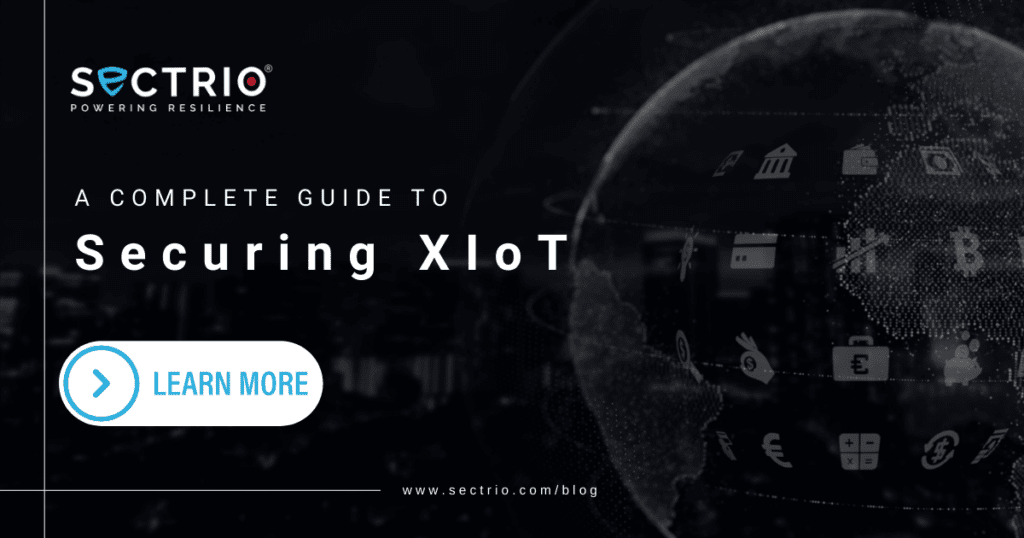Complete Guide to XIoT Security
The Extended Internet of Things (XIoT) is a comprehensive term covering all connected cyber-physical systems. It is not just the traditional “Internet of Things” (IoT) devices you might think of, like smart speakers and wearables. XIoT goes beyond that to include: So, XIoT is essentially the next level of the IoT—a more connected and intelligent version that combines all of these different types of devices and systems. XIoT has the capacity to create many new opportunities for automation, efficiency, and innovation. Before going into the details, let’s start with understanding IoT. What Is IoT? The Internet of Things (IoT) refers to the interconnection of everyday physical objects to the Internet, enabling them to collect and exchange data. This interconnected network facilitates a perfect flow of information between devices, contributing to a more efficient and automated environment. Numerous examples illustrate the pervasive impact of IoT across various sectors. For instance, in manufacturing, IoT-enabled sensors can monitor equipment performance in real time, predict potential failures, and trigger preventive maintenance. In the energy sector, smart grids leverage IoT to manage and control power distribution more intelligently, ensuring reliability and optimizing energy consumption. These examples underscore how IoT in OT enhances productivity and contributes to creating more resilient and adaptive systems in critical industries. What Are XIoT Devices? XIoT, short for Extended Internet of Things, covers three categories of devices found in diverse settings: enterprise IoT devices, network devices, and operational technology (OT) devices. Examples of XIoT Devices The integration of interconnected devices and equipment within organizations holds the potential to herald a “fourth industrial revolution” on the business front. More than 80% of executives spanning diverse industries acknowledge the IoT, citing its critical role in various aspects of their business operations. The universality of “smart objects” permeates daily life, ranging from “smart home” intelligent thermostats, smartphones, and laptops to intricate industrial machinery and expansive transportation networks. Governments are contemplating the realization of comprehensive “smart cities” driven by large-scale IoT applications. The all-inclusive objective of IoT is to elevate efficiency, refine decision-making processes, and unlock novel opportunities by comfortably merging digital and physical existence. The prevalence of extended IoT (XIoT) devices is common both in domestic settings and business environments. Consider the following examples of XIoT devices across different categories: OT: IIoT: IoT: Network: How Does XIoT Function? XIoT operates by connecting various physical devices to the internet, thus allowing them to communicate and share data seamlessly. This integration opens up possibilities for enhanced efficiency, automation, and improved decision-making across different sectors. 1. Device Integration XIoT begins by embedding sensors and devices into various physical objects or industrial machinery. These devices have the ability to collect data from their surroundings, like temperature or performance metrics. 2. Data Transmission Collected data is sent over the internet to a central platform or cloud-based system. This allows for efficient communication between devices and the central hub. 3. Centralized Processing The transmitted data undergoes processing on a central platform or cloud system. Advanced algorithms and analytics tools analyze the data, extracting meaningful insights and information. 4. Bidirectional Communication A crucial aspect of XIoT is the two-way communication between devices. They not only send data to the central system but can also receive instructions or updates, enabling them to adapt and acknowledge changes. 5. Automation and Efficiency The interconnected network of devices facilitates automation, reducing the need for manual intervention. This leads to improved efficiency in various processes. 6. Security Measures Security is a top priority in XIoT. Encryption and authentication protocols are in place to protect the transmitted data, ensuring that only authorized entities can access and interact with connected devices. 7. Edge Computing XIoT often involves edge computing, where data processing occurs closer to the devices. Thus, XIoT improves system performance, reduces lag, and helps in more effective real-time decision-making. XIoT creates a network of interconnected devices, enabling perfect communication, automation, and data-driven decision-making across diverse applications. The integration of security measures and the utilization of edge computing contribute to the reliability and effectiveness of XIoT systems. How Is XIoT Important in OT? The significance of the XIoT in operational technology (OT) lies in its ability to revolutionize industrial processes by interconnecting physical devices and facilitating data-driven insights. This integration enhances efficiency, automation, and decision-making in various industrial sectors. Details: Enhanced Monitoring and Control XIoT provides real-time monitoring capabilities in OT, allowing businesses to observe industrial processes closely. This enables timely responses to potential issues, ensuring smoother operations. Predictive Maintenance Through continuous data collection and analysis, XIoT in OT enables predictive maintenance. This proactive approach helps identify potential equipment failures before they occur, minimizing downtime and reducing maintenance costs. Data-Driven Decision-Making XIoT facilitates data-driven decision-making in OT by providing actionable insights derived from analyzing collected data. This helps businesses make informed and strategic decisions. Interconnected Systems XIoT fosters connectivity between different components of OT systems. This interconnectedness streamlines communication, leading to improved coordination and efficiency in industrial processes. Optimization of Workflows The integration of XIoT devices in OT optimizes workflows by automating routine tasks and giving real-time feedback. This leads to increased operational efficiency and resource utilization. Scalability and Adaptability XIoT solutions in OT are designed to be scalable and adaptable to changing industrial requirements. This flexibility allows businesses to evolve their processes in response to dynamic operational needs. Improved Resource Management XIoT contributes to better resource management in OT by providing insights into energy consumption, machinery performance, and overall resource utilization. This optimization helps reduce waste and enhance sustainability. Security Measures In OT, where the reliability and safety of industrial processes are a necessity, XIoT implementations include robust security measures. These measures safeguard against potential threats and unauthorized access to critical systems. XIoT plays an essential role in transformational technology, offering benefits such as enhanced monitoring, predictive maintenance, data-driven decision-making, interconnected systems, workflow optimization, scalability, adaptability, improved resource management, and strengthened security measures. These advantages collectively contribute to the advancement and efficiency of industrial processes. What Are the Challenges of XIoT? While the extended Internet
Complete Guide to XIoT Security Read More »










